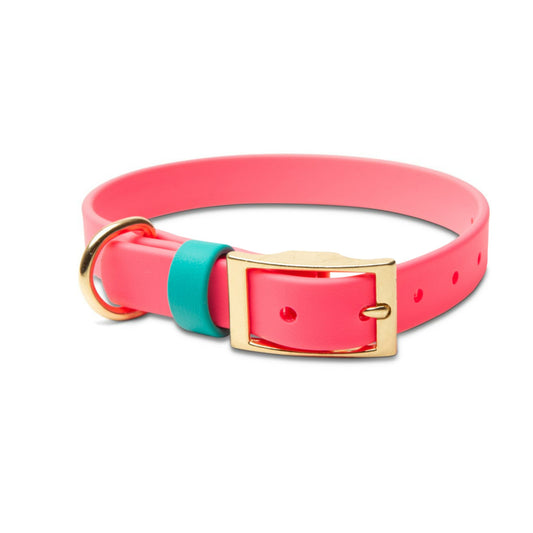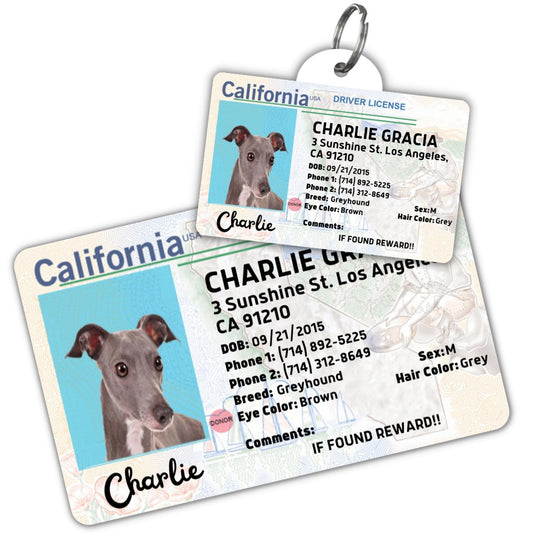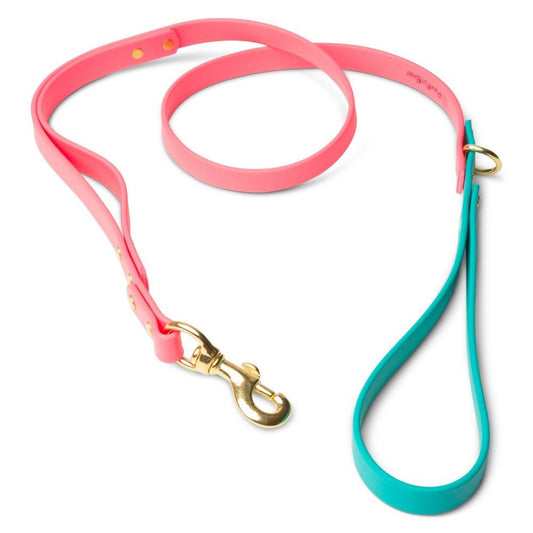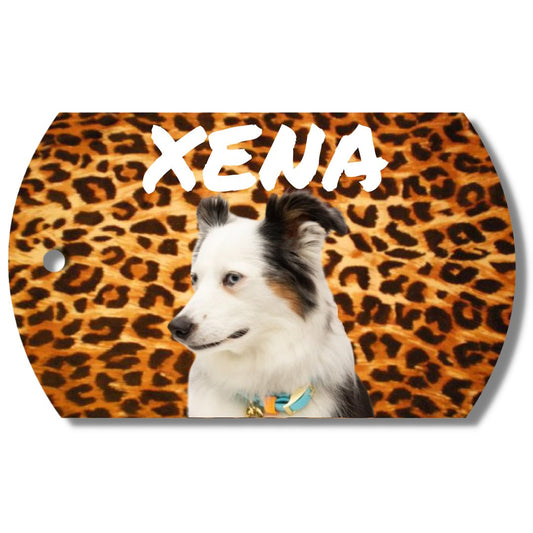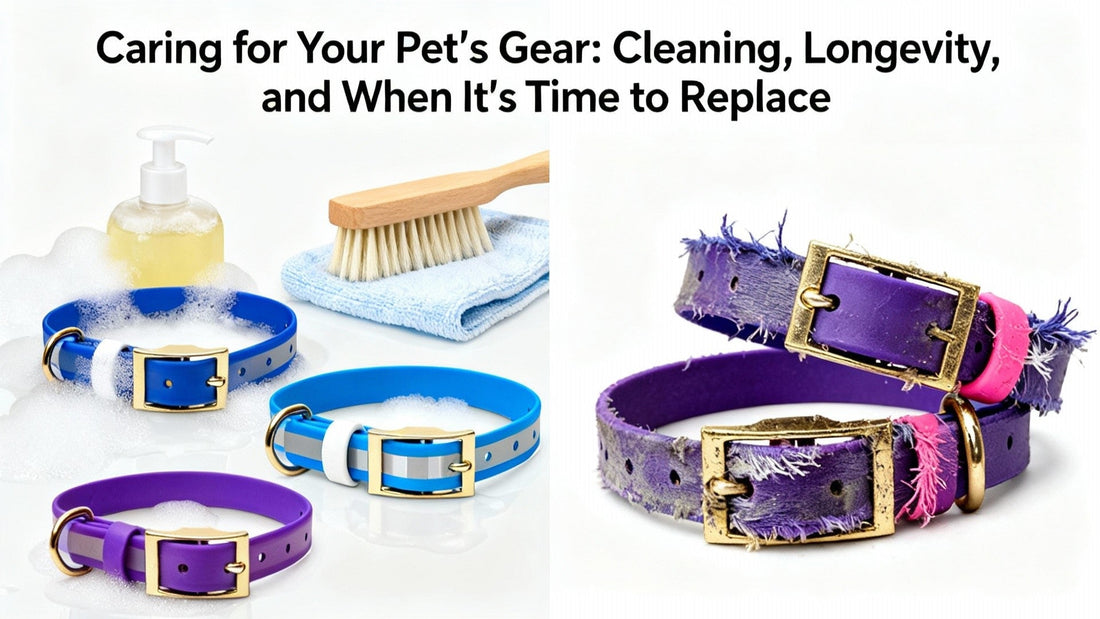
Caring for Your Pet's Gear: Cleaning, Longevity, and When It's Time to Replace
Your dog's collar, leash, and identification tags work hard every single day. They endure dirt, moisture, rough play, and constant wear while serving the critical function of keeping your pet safe and identifiable. Yet many pet owners treat these essential items as "set it and forget it" accessories, rarely cleaning them and replacing them only when they've deteriorated to the point of near-failure.
Proper care of your pet's gear such as their waterproof dog collars, ID tags etc., extends its lifespan, maintains hygiene, ensures safety, and saves money over time. Understanding how to clean different materials, recognizing signs of wear that demand replacement, and knowing which products offer superior longevity helps you make smart decisions about your pet's essential equipment.
Why Pet Gear Maintenance Matters
Before diving into specific care instructions, it's worth understanding why maintenance deserves your attention. Your dog's collar and leash aren't merely accessories—they're safety equipment that must function reliably in critical moments.
A collar in poor condition can break when your dog lunges unexpectedly, potentially allowing them to escape near traffic or in unfamiliar areas. Worn leashes compromise your control during walks, creating safety risks for both your dog and others. Dirty, bacteria-laden gear can cause skin irritation, infections, and unpleasant odours that make the human-dog bond less enjoyable.
Regular maintenance prevents these problems while extending the useful life of quality products. When you invest in premium gear like Biothane collars or quality engraved dog tags, proper care ensures you get full value from that investment.
Material Matters: Understanding What You're Working With
Different collar and leash materials require different care approaches. Knowing what your gear is made from determines the best maintenance strategy.
Biothane: The Low-Maintenance Champion
Biothane dog collars and leashes represent the gold standard for easy maintenance. This coated webbing material consists of a polyester core wrapped in a waterproof coating, creating a surface that resists dirt, moisture, and bacteria.
The non-porous nature of biothane collars for dogs means nothing penetrates the material. Dirt, mud, oils, and bacteria sit on the surface where they're easily removed. This fundamental characteristic makes Biothane the easiest pet gear material to maintain while offering exceptional longevity.
Traditional Materials and Their Challenges
Leather collars and leashes require specialised care that many owners find burdensome. The porous material absorbs moisture, oils, and dirt, making thorough cleaning difficult. Leather also needs regular conditioning to prevent drying and cracking, adding an extra maintenance step that busy pet owners often skip.
Nylon gear falls somewhere between Biothane and leather in maintenance requirements. While machine washable, nylon absorbs odours into its fibres and degrades with repeated washing. The material also retains moisture, taking hours to dry after cleaning or wet weather exposure fully.
Metal Components: Tags and Hardware
Quality engraved dog tags and collar hardware require minimal but important maintenance. Metal components can tarnish, accumulate grime, or develop sharp edges as they wear. Proper metal care helps prevent these issues while maintaining tag readability.
Cleaning Washable Dog Collars: Step-by-Step Guide
Proper cleaning extends collar life while maintaining hygiene that protects your dog's skin health. The cleaning process varies by material, with washable dog collars made from Biothane requiring the least effort.
Cleaning Biothane Collars
The beauty of a waterproof dog collar made from Biothane lies in its effortless cleaning process:
-
Quick Daily Wipe: After muddy or dusty walks, simply wipe the collar with a damp cloth. The dirt comes off immediately with no scrubbing required.
-
Weekly Deep Clean: Once weekly, remove the collar and rinse it under warm running water. Apply a small amount of mild dish soap if needed, wipe the surface, and rinse clean. The collar will be dry within minutes.
-
Monthly Thorough Clean: For the most thorough cleaning, you can place Biothane collars in the dishwasher's top rack. The high-temperature water sanitizes completely without damaging the material. This level of cleaning is impossible with traditional collar materials.
The entire cleaning process takes seconds rather than the lengthy procedures required for other materials. This convenience means you'll actually maintain proper collar hygiene rather than neglecting it due to difficulty.
Cleaning Nylon Collars
Nylon collars require more involved cleaning:
Remove any tags or accessories, then hand wash in warm soapy water or place in a mesh laundry bag for machine washing on gentle cycle. Air dry completely before reattaching to prevent mildew. Even with proper washing, nylon collars gradually absorb odors that become difficult to remove completely.
Cleaning Leather Collars
Leather demands the most careful approach. Wipe with barely damp cloth—never soak leather. Use specialized leather cleaner if heavily soiled, then apply leather conditioner to prevent drying. This multi-step process must be repeated regularly, making leather the highest-maintenance collar option.
Maintaining Biothane Leashes for Dogs

Leashes endure even more stress than collars, making proper maintenance crucial for safety and longevity. Biothane leashes for dogs offer the same easy-care benefits as collars while providing superior durability.
Regular Cleaning Protocol
After each walk, quickly inspect your waterproof dog leash for obvious dirt or debris. Wipe down as needed with damp cloth. The waterproof construction means you can rinse the entire leash under running water without concern—something impossible with leather leashes that deteriorate from moisture exposure.
Weekly, give your Biothane dog leash a more thorough cleaning with mild soap and water. Pay special attention to the handle area where hand oils accumulate and the clip end where dirt concentrates. The material's smooth surface releases grime easily without requiring aggressive scrubbing.
Hardware Inspection
While cleaning your leash, inspect the clip mechanism carefully. Ensure it opens and closes smoothly, with no sticking or looseness. Check for cracks, rust, or deformation that could indicate impending failure. Quality hardware on PawFurEver's Biothane leashes maintains integrity for years, but regular inspection catches potential issues before they become safety hazards.
Storage Best Practices
Hang leashes on hooks rather than leaving them on floors or in piles. This prevents unnecessary wear, keeps them easily accessible, and allows air circulation. The waterproof nature of Biothane leashes means you can hang them immediately after wet walks without waiting for drying, unlike traditional materials that need air-drying time.
Caring for Engraved Dog ID Tags
Your dog's identification tags deserve maintenance attention despite their small size. These critical safety items must remain readable to serve their purpose effectively.
Cleaning Metal Tags
Quality engraved dog tags maintain readability far better than printed alternatives, but they still benefit from periodic cleaning:
-
Weekly Quick Clean: Wipe tags with soft, damp cloth to remove surface dirt and oils. This simple step prevents buildup that can obscure engraving over time.
-
Monthly Deep Clean: Mix mild soap with warm water, gently scrub the tag with a soft toothbrush (particularly around engraved areas where dirt accumulates), rinse thoroughly, and dry with soft cloth. This process restores shine while ensuring engraved text remains completely visible.
Avoid harsh chemicals or abrasive cleaners that could damage the metal or obscure fine engraving details. The deep engraving on quality tags from PawFurEver resists wear far better than surface-level etching, but gentle cleaning maintains optimal readability.
Waterproof Dog Tag Benefits
A waterproof dog tag isn't affected by rain, swimming, or wet conditions. However, "waterproof" refers to the tag's resistance to water damage, not its need for cleaning. Even waterproof tags accumulate dirt and oils that can reduce visibility. Regular cleaning ensures tags remain easily readable in any lighting conditions.
Tag Attachment Maintenance
Check split rings or attachment hardware monthly. Ensure rings haven't developed sharp edges from wear and remain securely closed. Replace any attachment hardware showing signs of weakness before failure occurs.
Recognizing Wear Patterns and Safety Concerns
Understanding normal wear versus concerning deterioration helps you identify when replacement becomes necessary for safety reasons.
Collar Wear Indicators
Biothane Collars: These exceptionally durable collars show minimal wear even after years of use. Warning signs requiring replacement include:
-
Fraying at buckle holes (rare but possible after many years)
-
Damage to buckle mechanism affecting secure closure
-
Significant cuts or gouges through the coating layer
-
Hardware rust or failure (though PawFurEver's quality hardware typically outlasts the collar itself)
The remarkable durability of biothane collars for dogs means replacement is rarely needed for wear-related reasons. Most owners replace them only for size changes or aesthetic preferences rather than deterioration.
Traditional Material Collars: Show wear much faster:
-
Leather: Cracking, stiffness, color fading, permanent odor, stitching breakdown
-
Nylon: Fraying, color fading, permanent odor, loss of structural integrity, buckle wear
Leash Wear Indicators
A waterproof dog leash made from Biothane maintains structural integrity far longer than traditional materials. Replace when you notice:
-
Handle area showing significant wear or discomfort
-
Clip mechanism failing to secure reliably
-
Any cuts or damage through the coating layer
-
Hardware rust or deformation
Traditional leashes require replacement far more frequently as materials degrade from moisture exposure and stress.
Tag Wear Indicators
Replace engraved dog ID tags when:
-
Text becomes difficult to read due to wear
-
Metal shows cracks or structural damage
-
Contact information changes
-
Tag becomes bent or damaged in ways that affect visibility
Deep engraving on quality tags maintains readability for years, far outlasting printed or surface-etched alternatives that fade within months.
Longevity Comparison: Investment vs. Replacement Costs
Understanding the true cost of pet gear requires looking beyond initial purchase prices to total ownership costs over time.
Leash Longevity Economics
Similar economics apply to leashes. Biothane leashes for dogs last 7-10 years with minimal maintenance while leather leashes require replacement every 1-2 years and nylon leashes every 2-3 years. The initial investment in quality pays dividends in both performance and cost savings.
Tag Replacement Realities
Quality engraved dog tags with deep engraving last 5+ years, while printed tags fade within 6-12 months. Surface-etched tags fall somewhere between, typically lasting 2-3 years. The deep engraving from PawFurEver creates lasting identification that resists wear and maintains readability.
When to Replace Despite Apparent Condition
Sometimes replacement makes sense even when gear appears functional.
Information Updates
Replace engraved dog ID tags immediately when contact information changes. An outdated phone number renders your dog's ID tag useless regardless of its physical condition. Consider this replacement cost part of moving or phone number change expenses—your dog's safety depends on current information.
Size Changes
Puppies growing into adult size require progressive collar replacements. Similarly, adult dogs experiencing significant weight changes need properly fitted collars for both comfort and safety. Don't force your dog to wear an ill-fitting collar just because it's still in good condition.
Safety Standard Updates
While rare, safety standard improvements occasionally warrant replacement of functional gear. If new research demonstrates that specific designs pose risks, consider upgrading even if your current equipment appears fine.
Seasonal Maintenance Considerations
Different seasons present unique challenges for pet gear maintenance.
Summer Care
Hot weather increases dirt and dust exposure during longer, more frequent walks. Biothane's easy cleaning makes maintaining hygiene simple despite increased use. The waterproof dog collar won't be damaged by frequent swimming sessions that dogs enjoy during summer heat.
Inspect gear more frequently during active summer months. Increased use accelerates wear, making regular checks important for catching issues early.
Winter Challenges
Cold weather creates unique maintenance needs. Salt and de-icing chemicals on sidewalks can damage some materials while leaving residue that irritates dog paws and skin. Biothane's resistance to these chemicals provides advantages over materials that absorb and retain salt residue.
After winter walks, rinse collars and leashes to remove salt and chemicals. The quick-drying nature of waterproof materials means you can do this immediately without waiting for lengthy drying periods.
Creating a Maintenance Schedule
Establishing routine maintenance prevents neglect and extends gear lifespan.
-
Daily: Quick visual inspection of collar, leash, and tags. Wipe down if visibly dirty.
-
Weekly: Thorough cleaning of collar and leash. Detailed hardware inspection. Tag cleaning.
-
Monthly: Deep clean all gear. Check the fit of the collar. Inspect for any wear patterns developing. Clean tags thoroughly.
-
Quarterly: Comprehensive evaluation of all pet gear. Replace any items showing concerning wear. Update information on tags if needed.
This schedule takes minimal time when working with easy-maintenance materials like Biothane, making consistent care realistic for busy pet owners.
Storage and Organization Tips
Proper storage extends gear life between uses.
Designated Storage Area
Create a specific location for pet gear. Wall hooks near your door provide convenient access while keeping items organized. This prevents damage from being stepped on or tangled and makes daily walks more efficient.
Multiple Set Rotation
Consider having two sets of collars and leashes for dogs who swim or play in water frequently. This allows one set to air out while using the other, though the quick-drying nature of Biothane makes this less necessary than with traditional materials.
Travel Gear Separation
Keep a separate travel collar and leash in your car or travel bag. This ensures you always have backup equipment and aren't scrambling during vacation preparations.
The PawFurEver Quality Difference
Investing in quality pet gear from PawFurEver means starting with products designed for longevity and easy maintenance. Their handcrafted Biothane collars, leashes, and deeply engraved tags provide superior durability that rewards proper care with years of reliable service.
The USA-made construction ensures consistent quality, while the choice of Biothane material reflects understanding of what pet owners need—gear that performs reliably while requiring minimal maintenance effort. When you combine quality products with proper care, you create a combination that serves your dog excellently while providing outstanding value.
Conclusion
Caring for your pet's gear doesn't require extensive time or effort when you choose the right materials and establish simple routines. Washable dog collars and waterproof leashes made from Biothane transform maintenance from a chore into a quick, simple process that takes seconds rather than minutes.
Understanding when cleaning suffices versus when replacement becomes necessary ensures your dog always wears safe, functional equipment. The investment in quality gear pays dividends in longevity, performance, and ease of care that cheaper alternatives simply cannot match.
Your dog's collar, leash, and tags serve critical safety functions that depend on proper condition and maintenance. By following the care guidelines outlined here and choosing durable materials like Biothane, you ensure your pet's gear remains reliable, hygienic, and safe for years to come. The small effort required for maintenance becomes simple routine when working with well-designed, quality products that make caring for your pet's gear almost effortless.
Frequently Asked Questions
1. How do I clean a Biothane dog collar from PawFurEver?
PawFurEver Biothane collars are designed for easy maintenance. Simply wipe with a damp cloth for daily cleaning. For a deeper clean, rinse under warm water with mild soap, then air dry. Their waterproof, non-porous surface makes cleaning effortless and keeps your dog’s collar hygienic for years.
2. Can I wash my dog's PawFurEver nylon collar in the washing machine?
Yes! PawFurEver nylon collars can be hand-washed or machine-washed on a gentle cycle in a mesh laundry bag. Remove any tags before washing, and air dry completely to prevent mildew. While durable, PawFurEver Biothane collars are a lower-maintenance alternative for long-term use.
3. How do I maintain PawFurEver engraved dog ID tags?
PawFurEver engraved dog tags are built to last. Clean weekly with mild soap and warm water using a soft cloth or toothbrush. Avoid harsh chemicals to preserve deep engraving. With proper care, these tags remain readable for years, keeping your dog safe and easily identifiable.
4. Are PawFurEver waterproof dog tags truly maintenance-free?
While PawFurEver waterproof dog tags resist water, they still benefit from regular cleaning to remove dirt and oils. A quick wipe with mild soap and warm water keeps them legible and shiny, ensuring your pet’s ID is always clear during walks, swims, or adventures.
5. When should I replace my PawFurEver collar or tag?
Replace PawFurEver collars or tags if you notice fraying, cracks, or unreadable engraving. Also, update tags whenever your contact info changes. PawFurEver’s high-quality Biothane collars, leashes, and deeply engraved tags are built to last, meaning replacements are needed far less frequently than standard pet gear.


